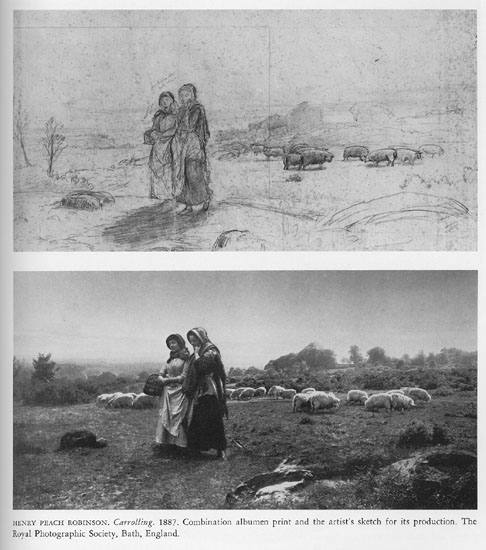A few examples of early compositing.
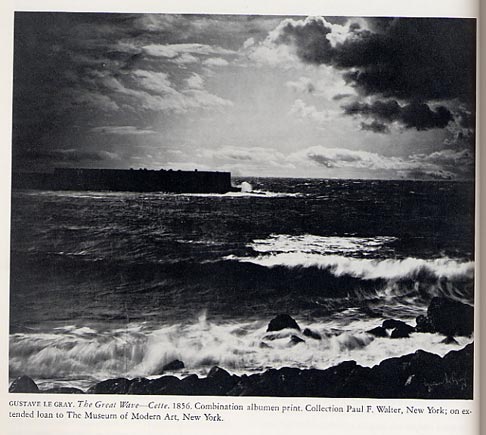
Gustave Le Grey The Great Wave 1856
The silver iodide emulsions of the
time were sensitive only to the blue rays of the spectrum and those that
lay beyond. In the sky it is predominant, and thus skies were overexposed
and cloudless when a significant amount of time had been given to record the
features of a landscape.
An alternative was for the photographer to make 2 negatives of a landscape:one
was exposed for the earth, and a much shorter exposure for the sky. The 2 negatives
were masked; part of the print was made from one, and part from the other.
this technique came to be called combination printing, and was used by Gustave Le Grey.
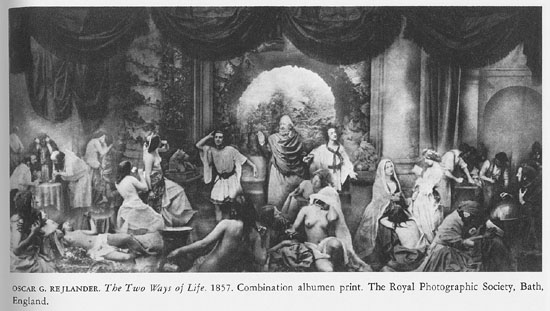
Oscar Rejlander The Two Ways of Life 1857
Compositing was taken to extremes by Oscar Rejlander in The Two Ways of Life, portraying an allegory of a sage introducing two young men into life. One turns toward Religion, Charity and Industry, while the other rushes toward the pleasures of the world.
He photographed the models in groups. He made 30 negatives, which he masked so they would fit together like a picture puzzle. Then he masked a sheet of sensitized paper to match each negative and printed them one after the other in the appropriate positions. It took him six weeks to produce the final print.
After exhibition at the Art Treasures Exhibition in Manchester in 1857,it was purchased by Queen Victoria. It was hailed as "a magnificent picture, decidedly the finest photograph of its kind ever produced. Because of the the nudity, sometimes only the rightious side of the image was shown in exhibition.
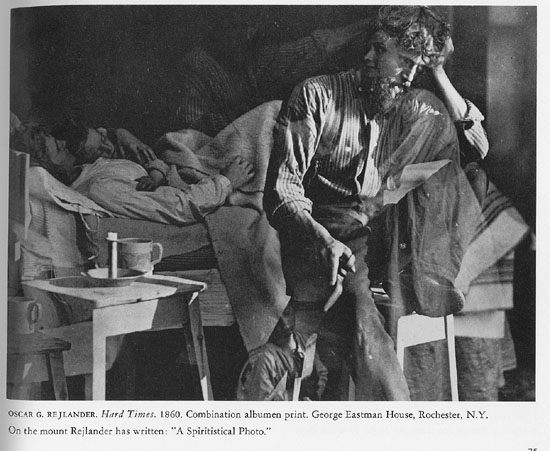
Oscar Rejlander Hard Times 1860
Perhaps the first deliberately double-exposed photograph.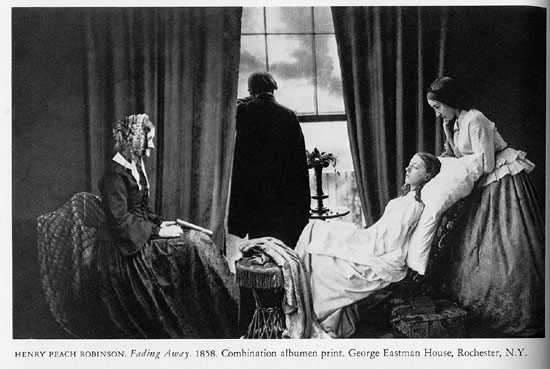
Henry Peach Robinson Fading Away 1858
A combination print showing a dying girl attended by grief-stricken parents. The print was made from 5 negatives. Robinson stated that the model "was a fine healthy girl of about 14, and the picture was done to see how near death she could be made to look". The public was shocked. Because it was photographed, it was implied that it was a truthful representation, and so the scene was viewed literally. There was widespread criticism of the work.
At a time when painters were taking their canvases outdoors, robinson sometimes used studio techniques like painted backdrops, shrubs on rolling platforms, and a brook improvised from the darkroom drain. He told the beginning photographer that:
Any "dodge, trick and conjuration," of any kind is open to the photographers use so that it belongs to his art, and is not false to nature...It is his imperative duty to avoid the mean, the bare and the ugly, and to aim to elevate his subject, to avoid awkward forms, and to correct the picturesque.
